Starting on June 7th, the Oliver Museum will host the youth photography exhibit “Oliver in Focus.”
Viewing entries in
News
Starting on June 7th, the Oliver Museum will host the youth photography exhibit “Oliver in Focus.”
Our 2019 summer Heritage Assistant positions are now open! Apply today.
Yvonne Moore to share school memories at Annual General Meeting on May 8th.
Visit the Museum Easter Monday from 1-4 pm for egg-hunting, crafts, and candy!
The 2019 AGM will take place Wednesday, May 8, 2019 at 7:00 pm.
The Oliver & District Heritage Society has some new and returning faces this year in its new Executive Director and Curator.
With the help of some solar panels and a new furnace and air conditioner, the Archives is saving energy and preserving its documents and resources for the future.
A one-day event featuring a free, all-ages workshop on recording family oral histories, kids crafts and colouring, activities, and snacks! Come use our Selfie Station to take family photos, mark your family’s origins on our world map, and celebrate your family!
Several decades worth of materials donated to the archives are now available in the public collection! This backlog and the rest of the collection are now secured and 'future-proofed' through proper storage and housing, and ongoing digital preservation. The collection is now easier to navigate and more accessible!
Oliver & District Heritage Society is currently seeking photographs to use for our new exhibit "Deep Roots", a permanent display all about Oliver and the surrounding regional district. We are hoping to use local photographs as much as possible - see list for details! Terms and conditions outlined within.
This position has been filled.
This position has been filled.
The first thing to know is that the Archives can be thought of in four distinctive sections: the Research Room, office/work Spaces, and Collection Quarantine, and the "Vault".
You are probably most familiar with the Research Room - this is the place where researchers come and browse our Family History Files, Subject Files, and our extensive Research Library of local materials. It's the public 'front' of the Archives. Then there's workspaces of course, where staff, volunteers, and the public have desks, large tables and counter space to work on. There's also the quarantine area, where we freeze and clean incoming items before they are added to the collection.
You may not, however, have ever seen the back room of the Archives where we house all of the unpublished items in the archives collection: one-of-a-kind photographs, maps, diagrams, diaries, personal collections of documents, and so much more. We call it "The Vault". It's a pretty amazing place. You can access items in the vault on request if you're doing research. The Vault is also where we house the backlog of donated items that are awaiting processing as they are added to the collection.
Like all archives, we have a backlog of donated materials that hasn't been added to our collection. We work on the backlog whenever we can, but all of the paperwork, adding items to our database, applying conservation methods, and properly housing the materials takes a lot of time. With limited staff and resources, it really adds up. Here's what our backlog looked like in the spring of 2016:
We are pleased to announce that we received a grant from Library and Archives Canada to hire two archivists to deal with our backlog of donated archival materials. Since that time, they've been busy, busy, busy getting the Vault and the backlog into good order.
It's been 5 months since the project started, see what we've been up to!
Metal staples are replaced with plastic archive-quality clips.
Literally floor to ceiling scrubbing and disinfection. Note that the shelves are right up against the walls in this photo - Not for long!
Many of our Vault backlogged materials were inadequately housed: vertically, in regular cardboard boxes, on the floor, stacked too high, or rolled too tightly. We've taken steps to alleviate most of these issues by rehousing items according to archives standards whenever possible.
We moved out many items from the vault that didn't need to be stored there (ladders, office equipment, etc), to make room for new shelves. We purchased these very sturdy shelves from Target in Kelowna when they closed doors some time ago.
We moved out many items from the vault that didn't need to be stored there (ladders, office equipment, etc), to make room for new shelves. We purchased these very sturdy shelves from Target in Kelowna when they closed doors some time ago.
As part of our disaster preparedness plan, we are securing all shelving to the walls (in case of earthquakes), with an 8-inch gap between the walls at the shelves themselves (in case of roof leakage, or fire). The lowest shelves are at least 6 inches off the ground (in case of floods). We're ready for you, mother nature!
We moved out many items from the vault that didn't need to be stored there (ladders, office equipment, etc), to make room for new shelves. We purchased these very sturdy shelves from Target in Kelowna when they closed doors some time ago.
Note that everything is at least 6" off the ground and 8" away from exterior walls, to protect against roof leaks and small floods.
There's a lot of shuffling of materials that takes place when improving shelving!
Shelves with free-standing ends are bolted together, increasing their stability and preventing lateral movement.
Shelves on exterior walls are now situated 8" off the wall, in case water were to ever find it's way through the roof and drip down.
Shelves on exterior walls are now situated 8" off the wall, in case water were to ever find it's way through the roof and drip down.
Shelves on interior walls that do not contain plumbing get bolted directly to the wall.
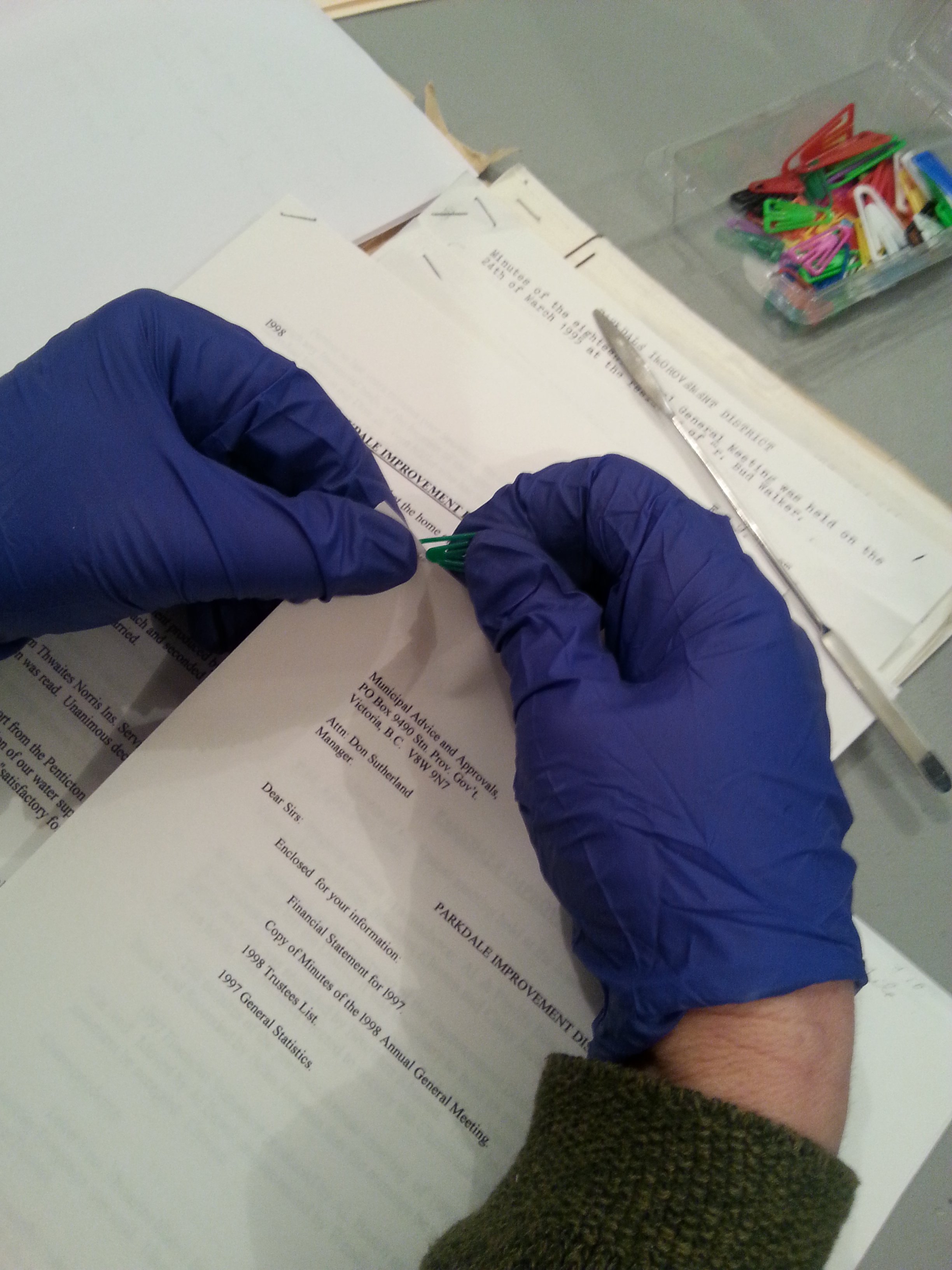
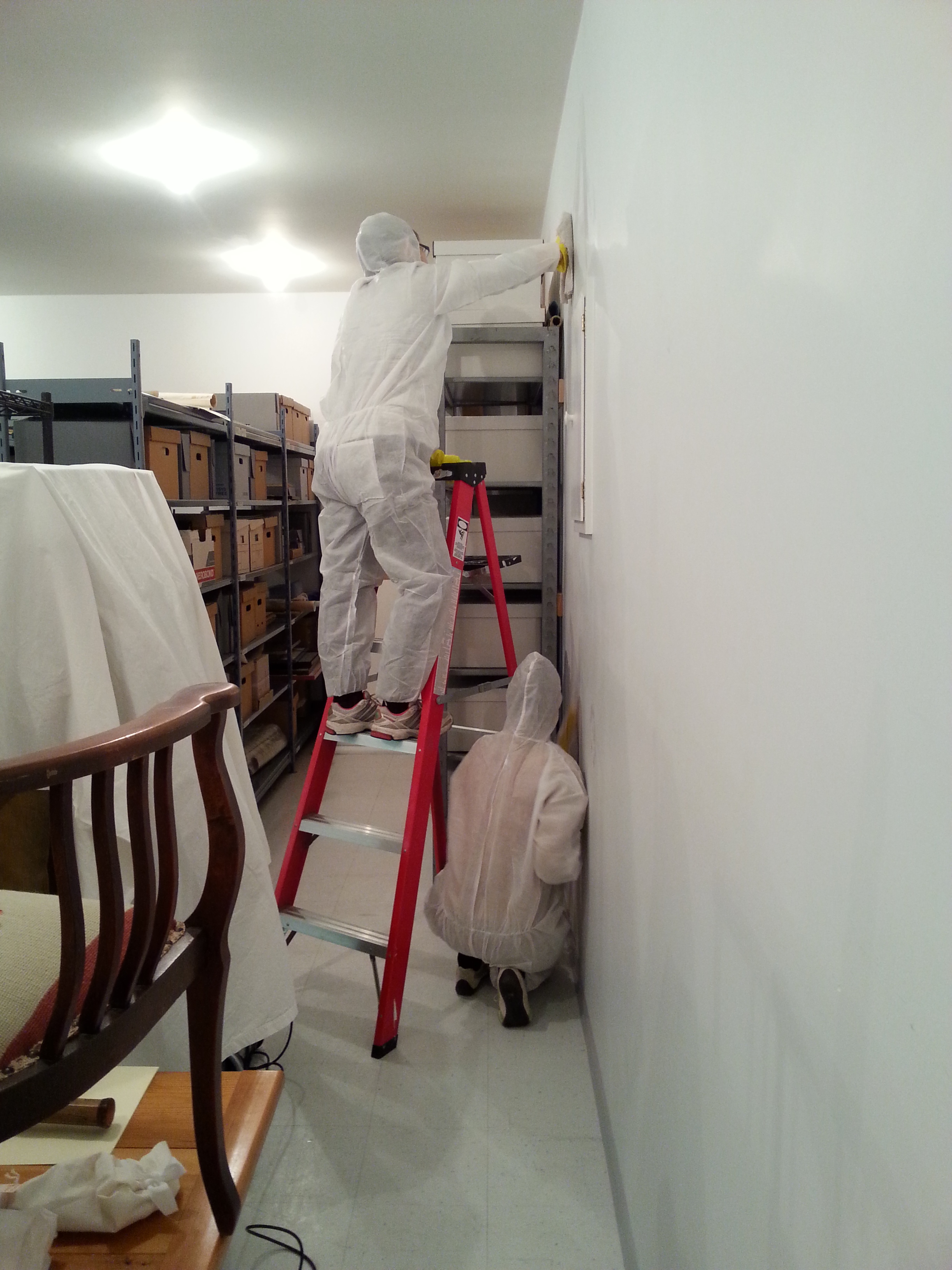
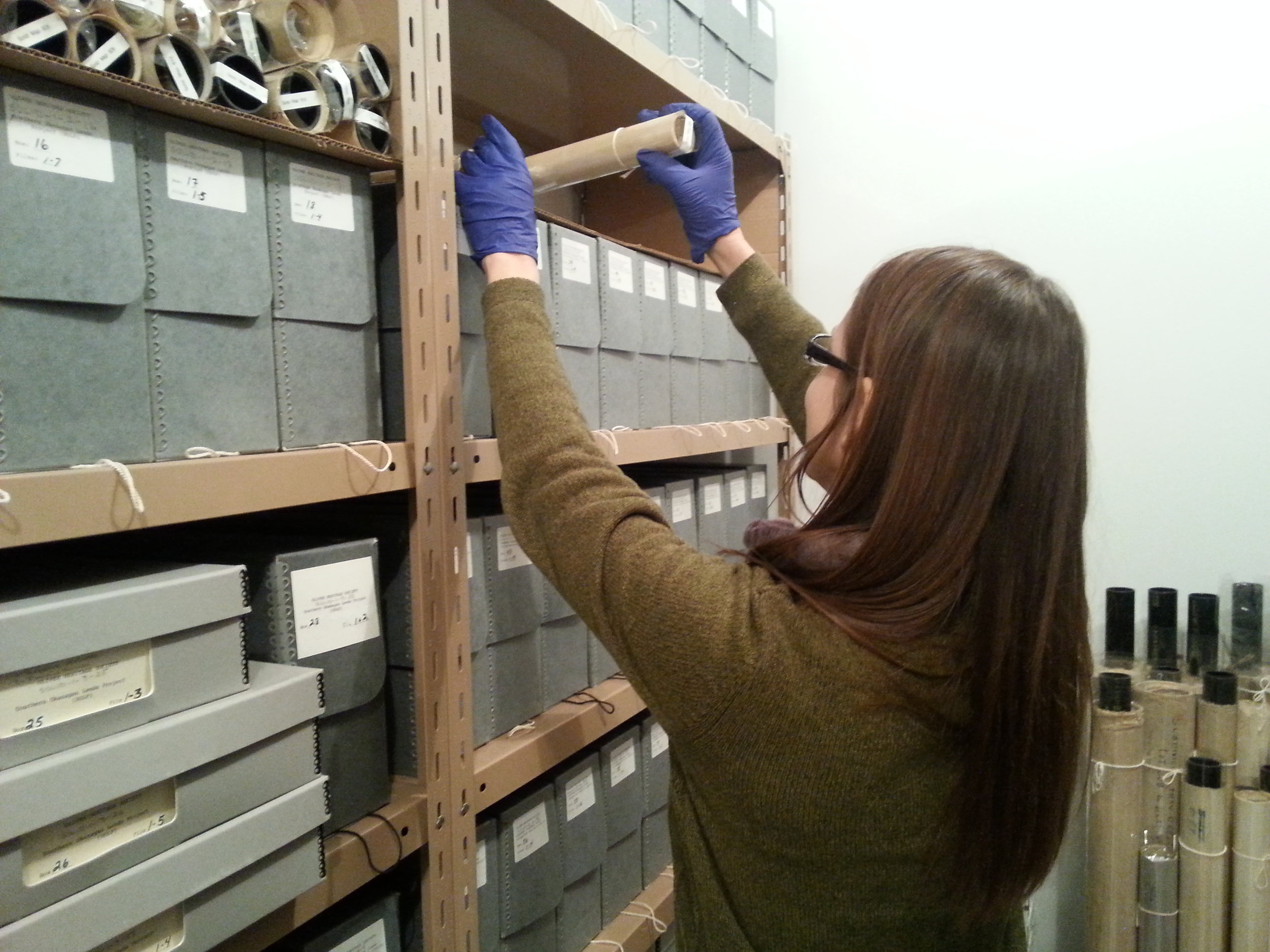
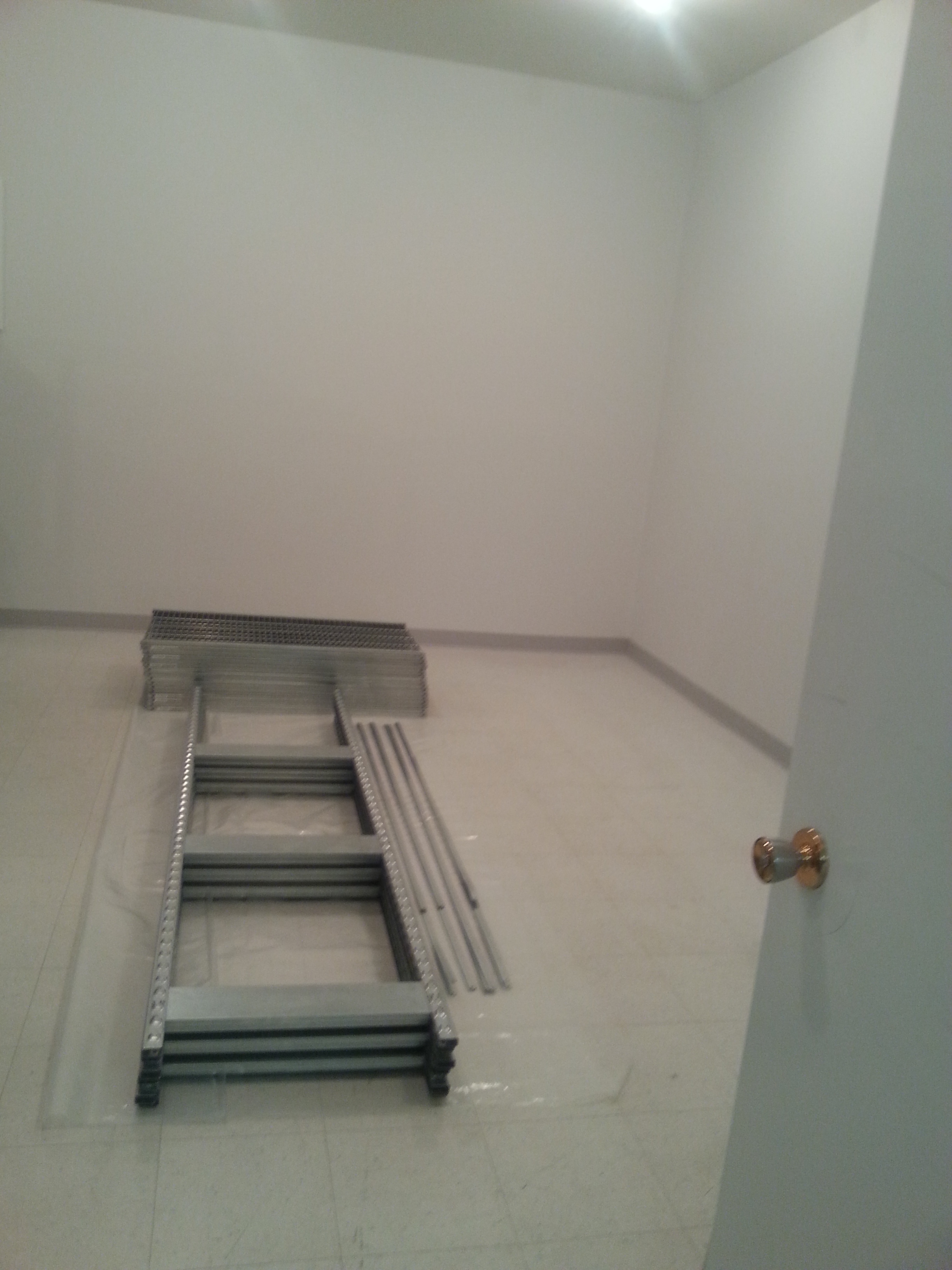
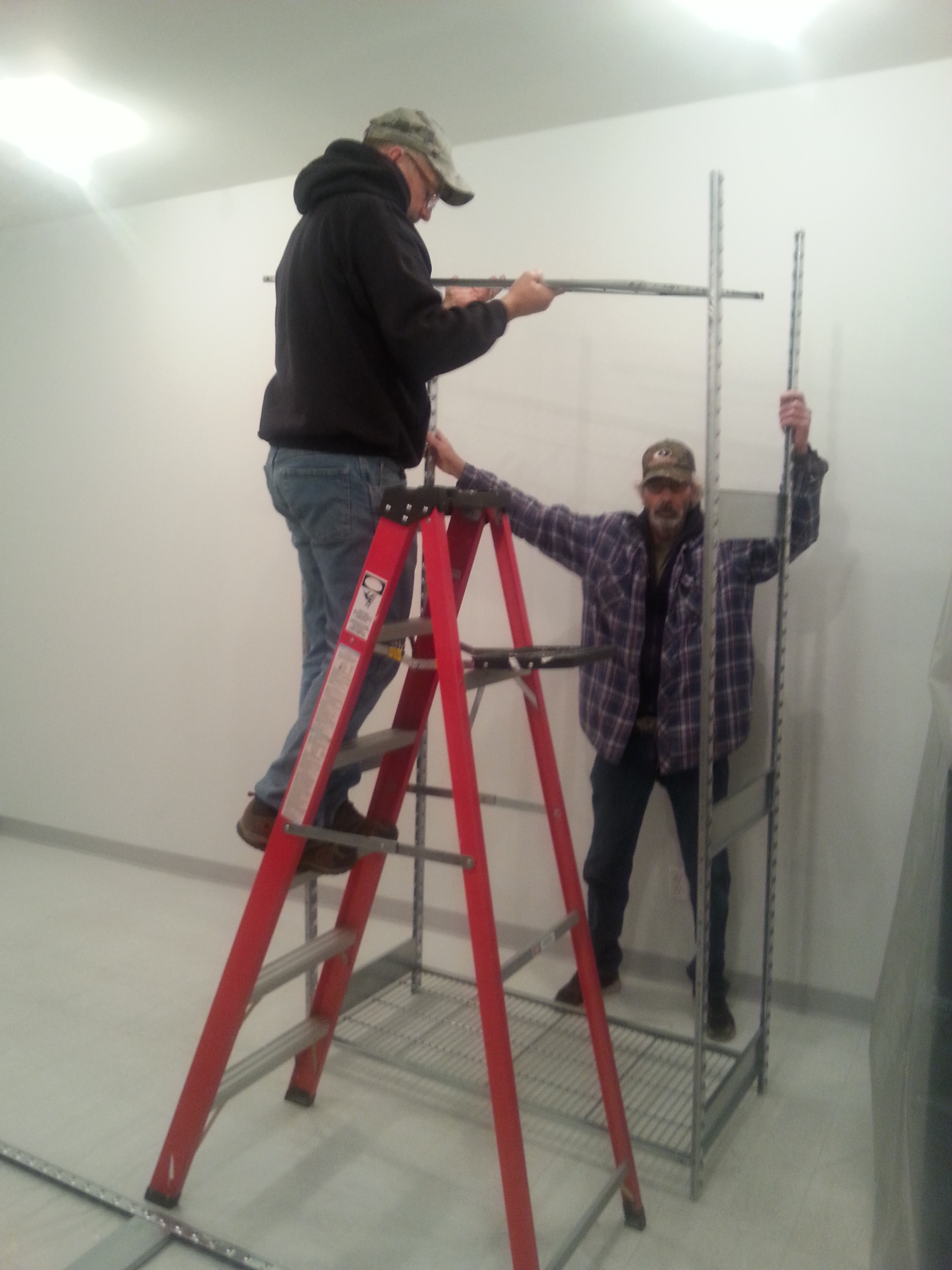
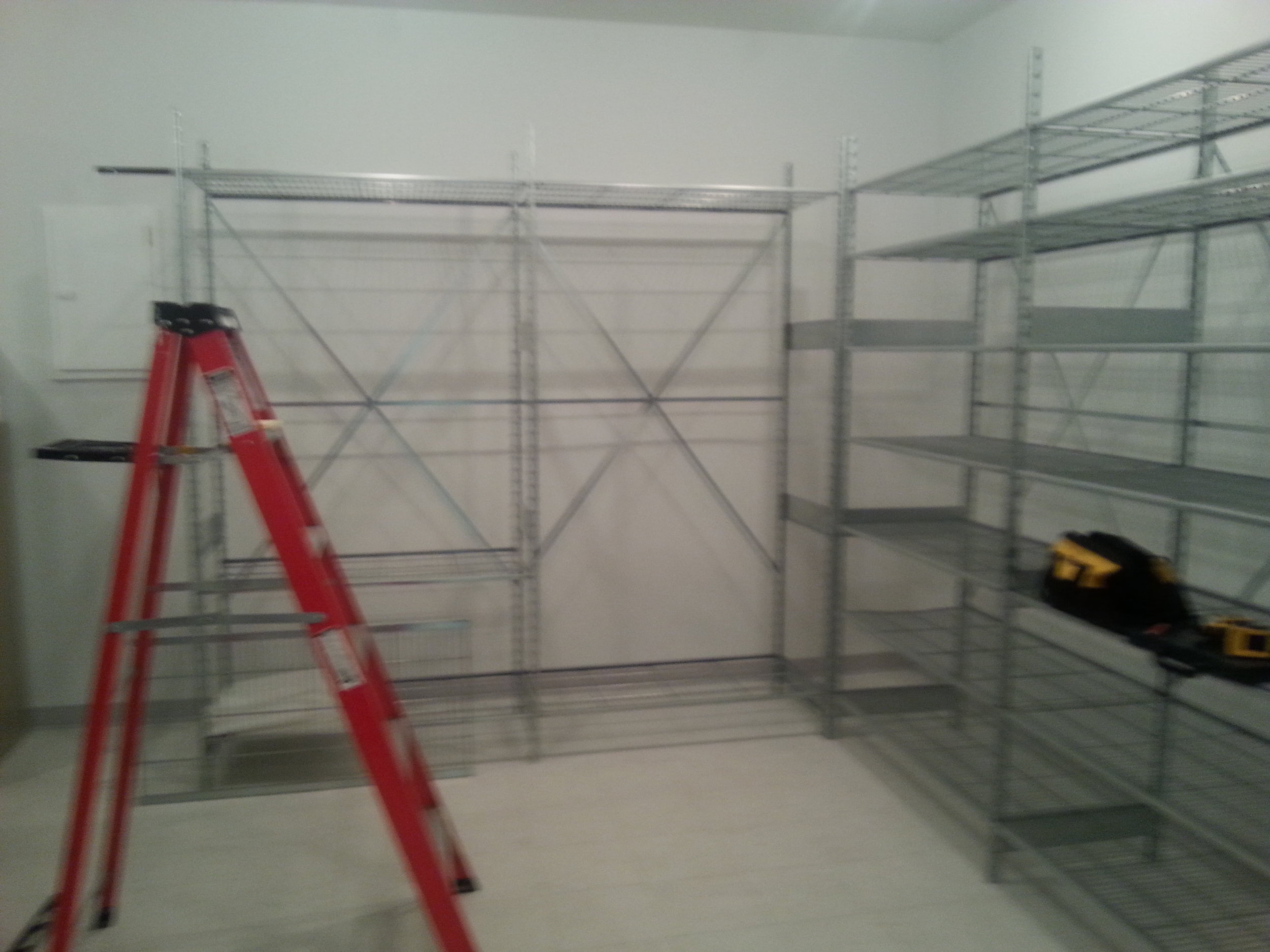
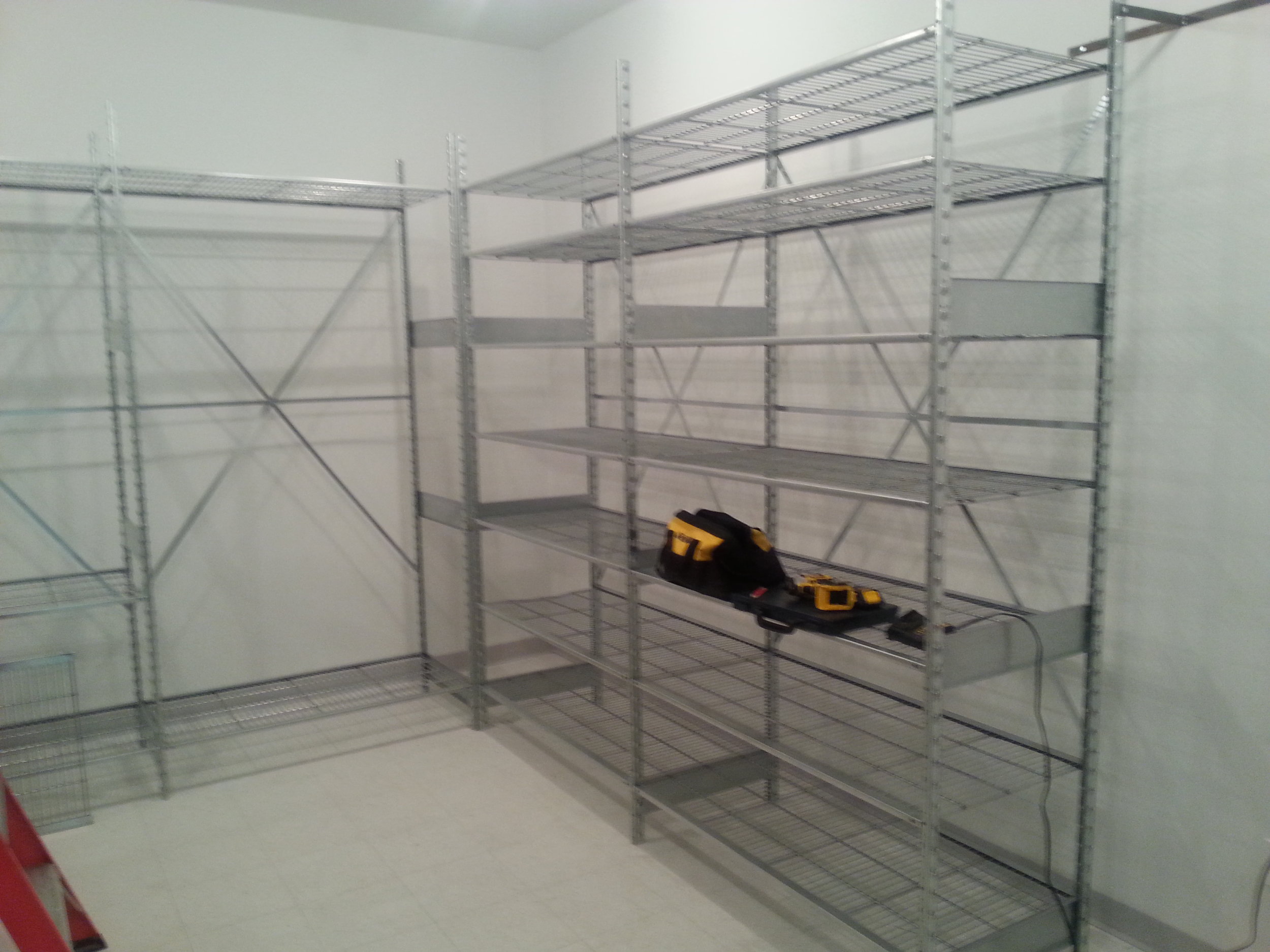
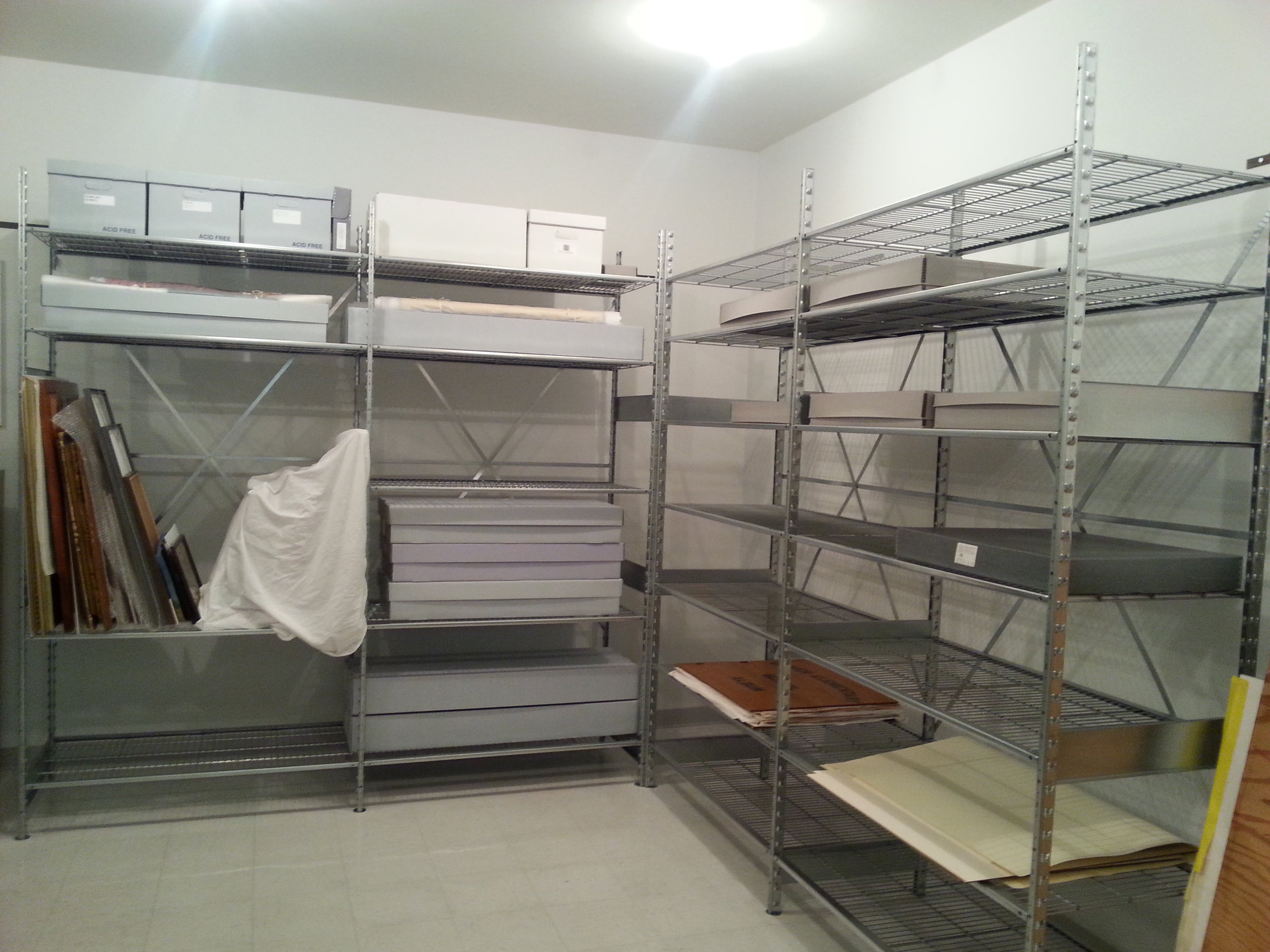
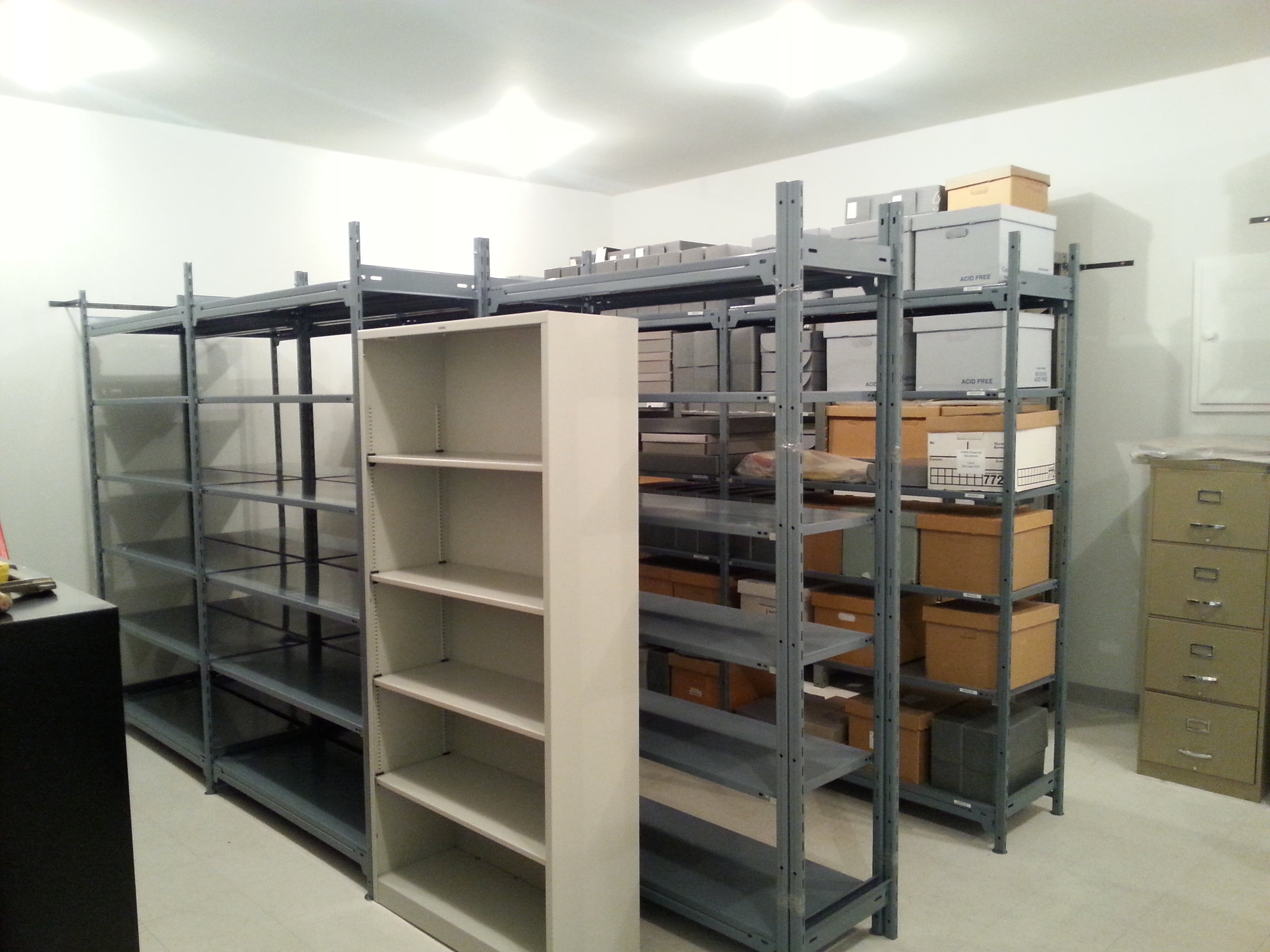

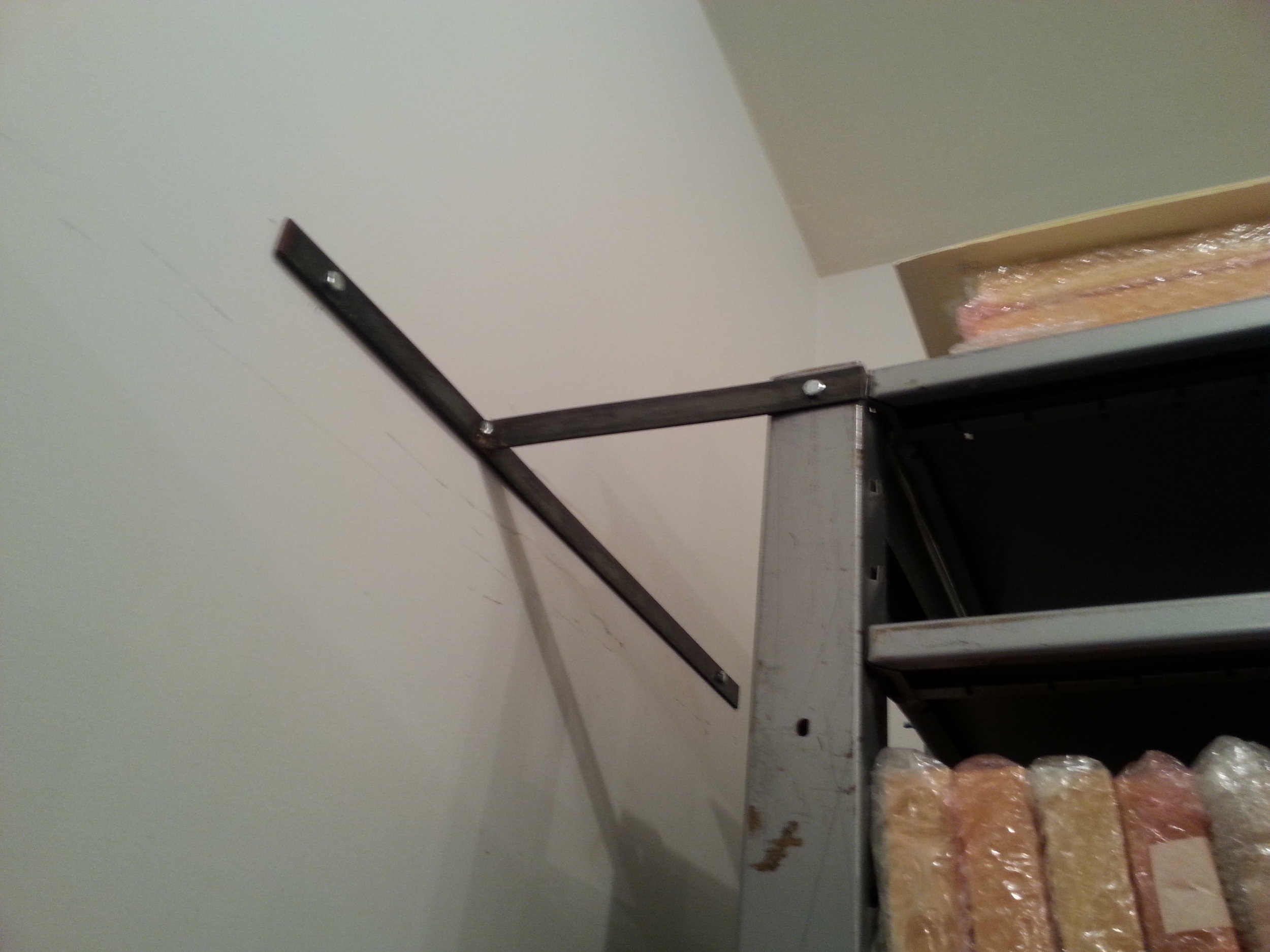
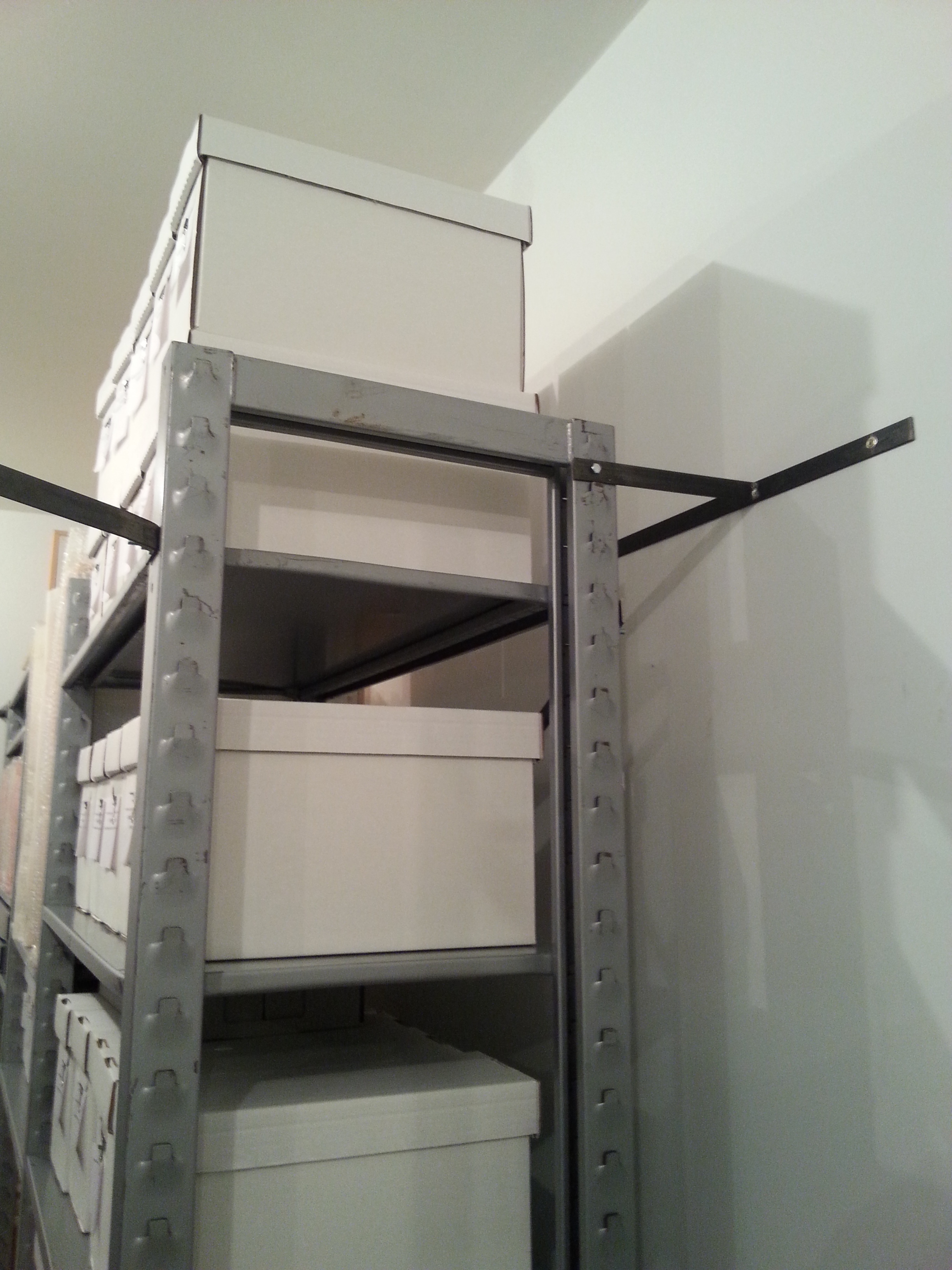
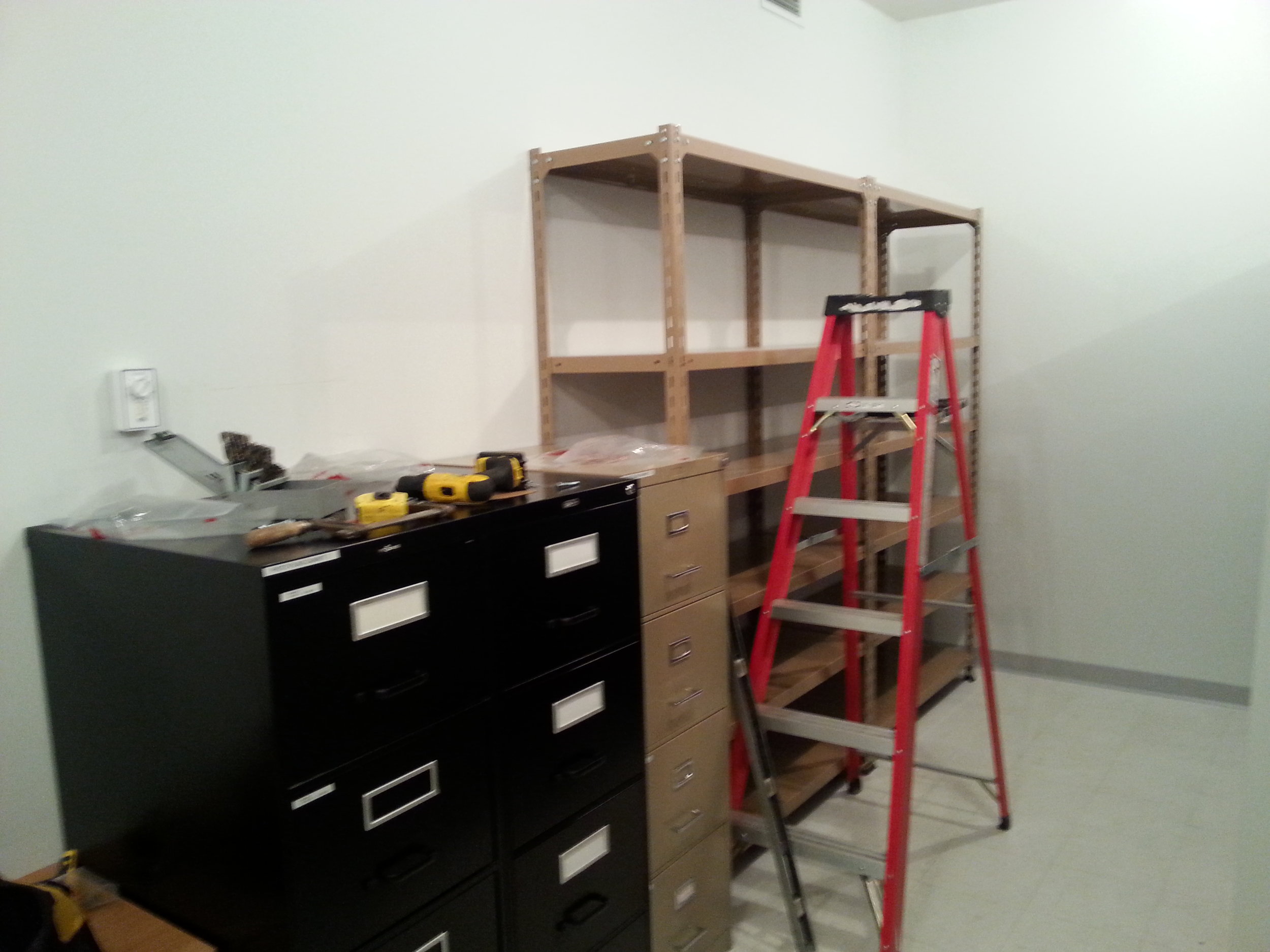
We've still got a ways to go, but we'll continue to post updates of our progress. Thanks for following!
We are very excited to announce that the BC Museums Association has awarded us $78,000 of Canada 150 funding to build our new permanent exhibit with the working title "Deep Roots".
This position has been filled.
As of November 2016, the transition process for the new BC Societies Act took effect, which meant that we had to examine our current constitution and bylaws in order to properly comply with the new rules. Changes to our bylaws will need to be voted on by our memebrship at our upcoming AGM. Here's what we came up with!
The Oliver and District Heritage Society has applied for and received $60,000 toward a new Heritage Garden to help serve the community of Oliver, thanks to the provincial funding program "BC Rural Dividend Fund for Community Capacity Building".
We began our New Year with significant improvements to the Archives building - new floors, new paint, new workspace, and a complete rearrangement of the Research Library and workable areas.